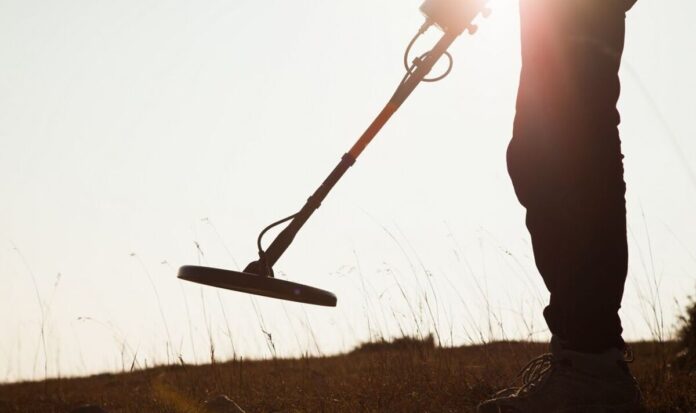An investigation has been launched after a spate of disappearances of potential treasures from secured council storerooms – amid fears of an inside job. The missing artefacts were unearthed by metal detectorists across Cumbria and Lancashire over the last four years, and are believed to have been worth thousands of pounds in total. The finds had been handed over to the authorities, pending an inquest to determine whether or not they officially constituted treasures. However, the detectorists fear that the missing items may now have been secreted into the antiquities black market.One unnamed metal detectorist told the Sun: ‘This is devastating for us personally but also for the nation.’Some of these items had not been held by human hands since the Bronze Age.’But after we found them and passed them to officials, they have vanished into thin air.’Another detectorist, Peter Major of Barrow – whose finds had included a set of 3,500-year-old, Bronze Age stave axe heads – added: ‘For two-and-a-half years I heard nothing, so went to see them and was told that one of my axe heads and all the coins had vanished.’I began speaking to other detectorists and was shocked to find I wasn’t alone.’ The police are investigating the disappearances of potential treasures from council storerooms (Image: Getty Images) An example of a find by a metal detectorist – a gold ring unearthed in Pontefract (Image: Getty Images)Under the Treasure Act of 1996, any person who unearths a potential treasure has 14 days to notify their local coroner and ‘finds liaison officer’ of the discovery.According to the Act – which applies in England, Wales and Northern Ireland – failure to do so is an offence under the law.Treasure is defined as any object that is at least 300 years old and at least 10 percent of which is made up of either gold or silver.The rules for coins are slightly different, with coins being defined as treasure if there are at least two coins dating back at least 300 years, unless they contain less than 10 percent gold or silver, in which case there must be at least 10 coins in the find to qualify.READ MORE: Real-life treasure hunters explain why people love metal detecting One metal detectorist told the Sun: ‘This is devastating for us personally but also for the nation’ (Image: Getty Images)Other objects considered treasure include two or more prehistoric base metal objects found in association with each other and deliberately hidden items that are less than 300 years old and substantially made up of gold or silver whose owners or heirs cannot be determined.The act also covers items found in association with any other object considered treasure.After reporting a possible treasure and handing it over to one’s local coroner, an inquest is held to determine whether or not the object or objects meet the above criteria.If the item is found to be a treasure, the finder is obligated to offer it for sale to a museum, at a price set by a board of independent experts known as the Treasure Valuation Committee.DON’T MISS:Germany sends Putin huge warning and unveils new ‘panther’ tank [REPORT]Ukraine sent US air defence systems to annihilate Putin’s missiles [ANALYSIS]Octopus Energy shares boiler hack saving customers £112 a year [INSIGHT] The Ringlemere Cup is an example of an artefact acquired by the British Musuem via the Treasure Act (Image: The Portable Antiquities Scheme / The Trustees of the British Museum)Following a sale, the Treasure Valuation Committee divides out the resulting ‘reward’ between the finder and the owner and/or tenants of the land on which it was found.If no museum is interested or able to purchase the item, then it is returned to the person who unearthed it.Non-treasure finds, meanwhile – everything from worked flints to pottery sherds – can be reported on a voluntary basis to the Portable Antiquities Scheme, which funds the posts of the Finds Liaison Officers.Officers typically borrow the items to study, photograph and document them. As the scheme’s website notes, ‘If recorded, these finds have the potential to tell us much about the past, such as how and where people lived and about the types of objects they made and used.’Express.co.uk has approached the Portable Antiquities Scheme for comment on the recent disappearances of potential treasure items.
Metal detectorists’ possible treasures ‘worth thousands’ go missing
Sourceexpress.co.uk
RELATED ARTICLES


